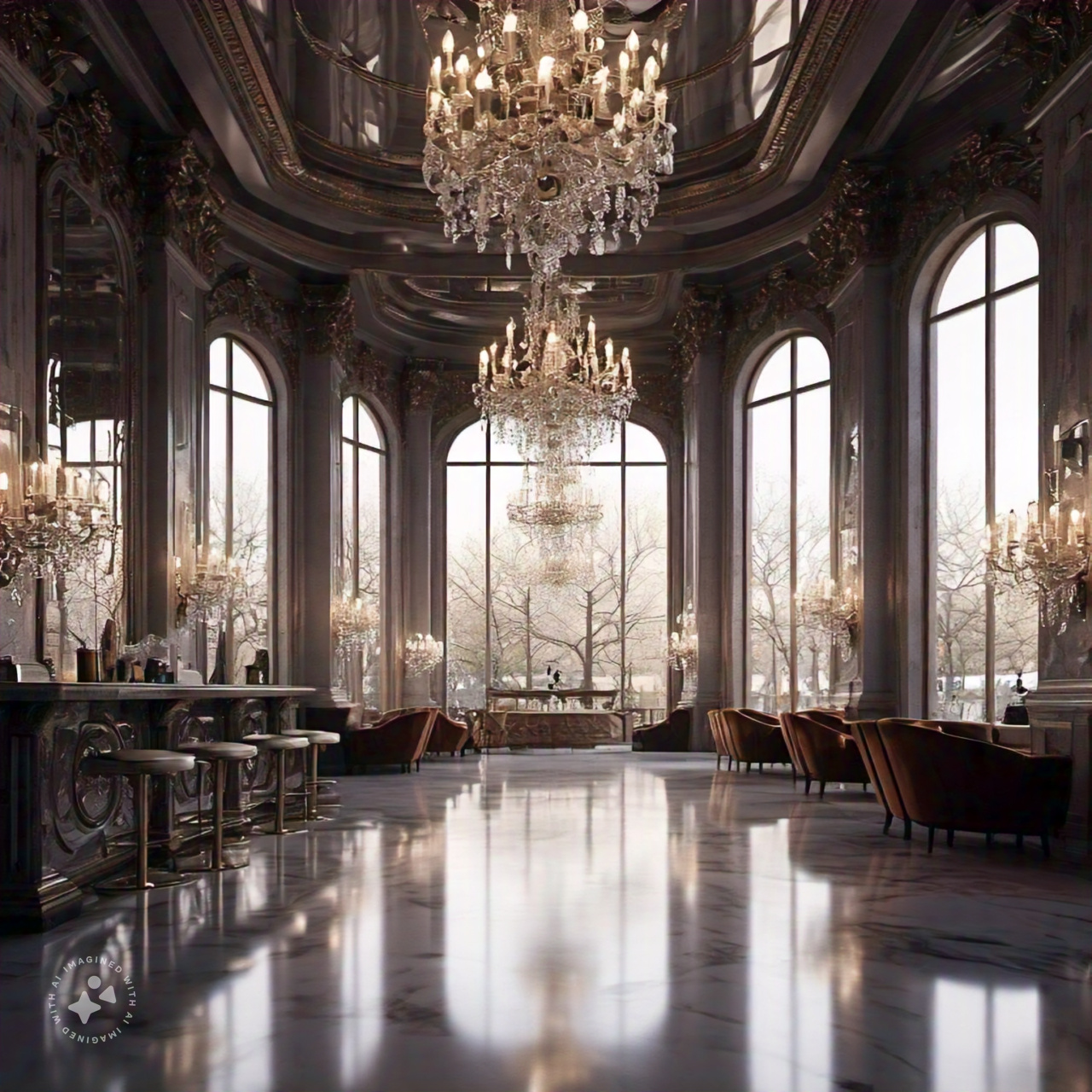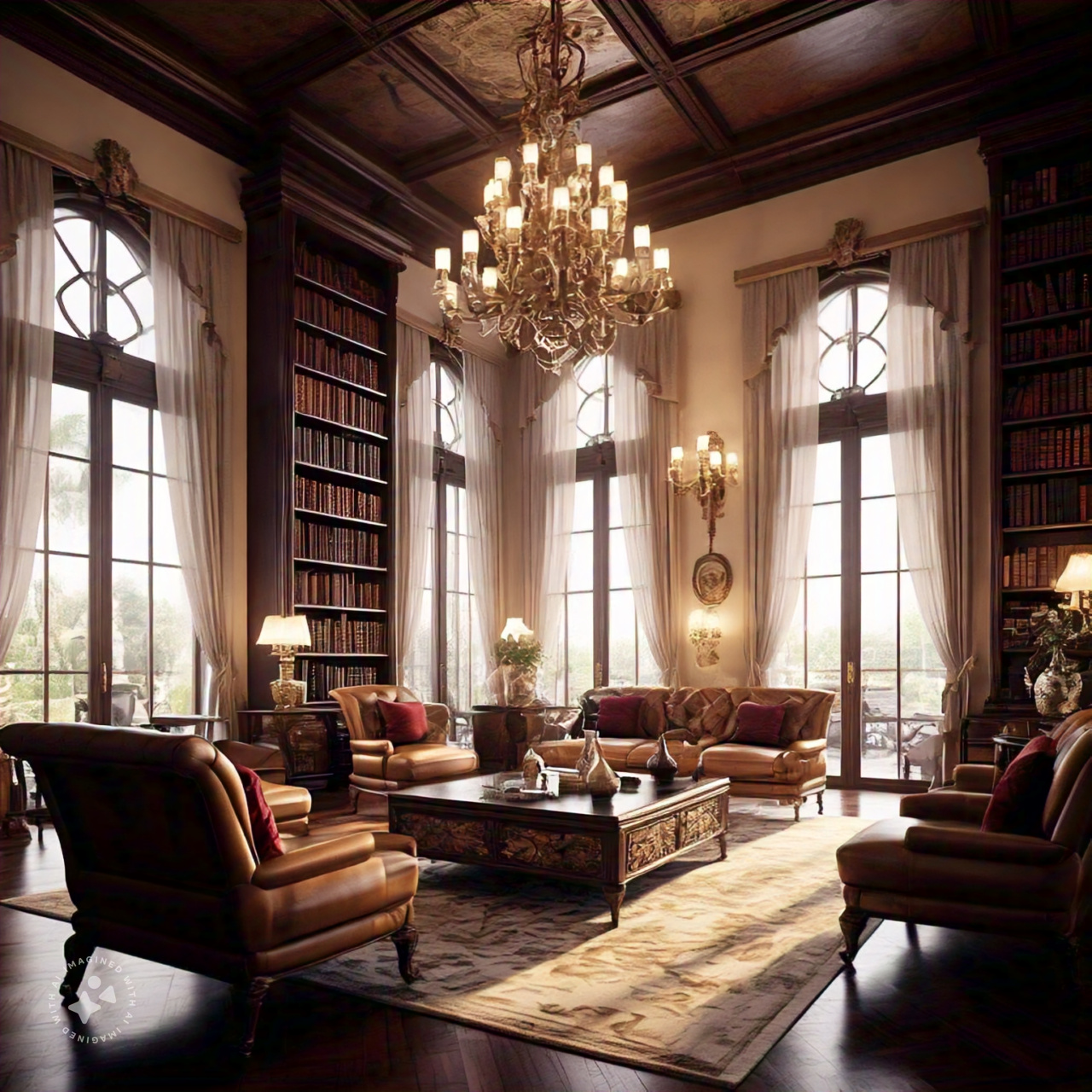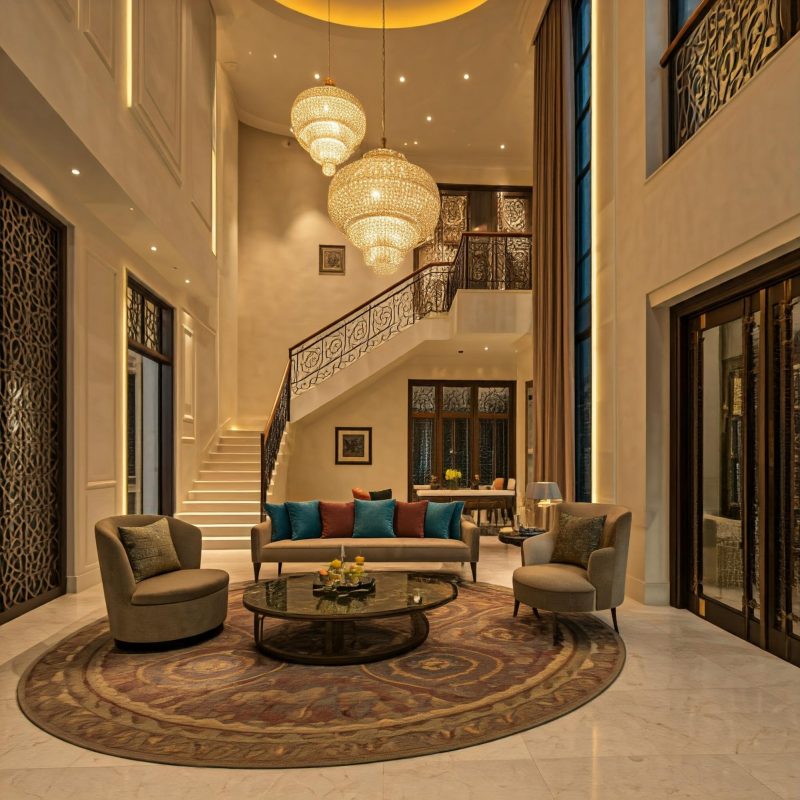Have you ever wondered how Dubai blends its rich, ancient culture with cutting-edge modernity in its interiors? Or how traditional Middle Eastern design elements are incorporated into sleek, contemporary homes? One such element that stands the test of time and continuously inspires Dubai’s modern interiors is Mashrabiya. These intricate, latticework panels have been a staple of traditional Arab architecture for centuries, but their beauty and practicality have found a place in contemporary designs too.
So, what is it about Mashrabiya that makes it so special? How can you incorporate it into your own space without compromising modern aesthetics? And what challenges come with introducing this rich cultural element into the design of your home? In this blog, we’ll explore the allure of Mashrabiya in Dubai’s interior design and help you navigate the difficulties people face when blending this traditional element with today’s interior trends. Whether you’re a designer or a homeowner looking to add character to your space, you’ll find plenty of ideas and solutions to bring Mashrabiya’s timeless beauty into your interiors.
Understanding the Challenges of Integrating Mashrabiya into Modern Interiors
Mashrabiya’s charm is undeniable, but when it comes to modern interiors, it’s not always easy to figure out how to use it effectively. Let’s explore the key challenges and how to overcome them.
Preserving Tradition in a Modern World
Mashrabiya is a deeply rooted element in Arab culture. It’s not just beautiful but functional, designed to provide privacy while allowing airflow and light to filter through. However, with modern minimalist aesthetics gaining popularity, incorporating intricate traditional designs can sometimes seem like a challenge. The trick is to strike a balance between heritage and simplicity. Designers today are experimenting with modern versions of Mashrabiya—using lighter materials like metal, glass, or even laser-cut wood that offer the same delicate patterns but in a more sleek, contemporary form.
Take, for example, the luxurious Dubai Marina residences. Many modern homes in this area have successfully incorporated Mashrabiya-inspired designs in their living rooms or external facades, blending old with new. The clean lines of modern interiors provide the perfect backdrop for these traditional designs, and when done right, Mashrabiya brings a sense of warmth and uniqueness to the space. So, while Mashrabiya evokes tradition, it can be tailored to fit the minimalism of today’s designs.
Key Points:
- Mashrabiya can be reinterpreted using modern materials like metal or glass to keep the aesthetic fresh.
- Mixing sleek, minimalist designs with Mashrabiya creates a perfect balance between tradition and modernity.
- Successful integration can be seen in luxury Dubai residences that use Mashrabiya-inspired features.
Space Constraints in Urban Settings
In a city like Dubai, where urban living often means smaller apartments or compact spaces, introducing large, intricate Mashrabiya features can feel overwhelming. The heavy, wooden screens that traditionally define this design element might take up valuable space and create a sense of clutter in smaller rooms. So, how do you bring the magic of Mashrabiya into such spaces without overpowering them?
The key here is creativity. Opt for lighter, more compact versions of Mashrabiya that serve as functional design elements. You can install Mashrabiya panels in areas where space is tight, such as between rooms or on doors, to create separation without sacrificing the openness of a room. Additionally, the positioning of Mashrabiya in areas like windows or partitions can allow for better light filtration and air circulation, making even the smallest space feel bright and airy.
Key Points:
- Use lighter, space-efficient Mashrabiya designs for urban homes.
- Employ Mashrabiya as room dividers or screens to define spaces without clutter.
- Positioning Mashrabiya on windows or walls can help with light and airflow.
Durability and Maintenance Concerns
Mashrabiya’s traditional form—especially those crafted from wood—can require ongoing maintenance. Over time, wood can warp or lose its color due to exposure to sunlight, moisture, or dust. This can be a concern for homeowners who want to enjoy the beauty of Mashrabiya without the constant upkeep. However, this is where modern materials come to the rescue.
Today, designers are using materials like aluminum, stainless steel, or even synthetic composites that mimic the intricate wood patterns but are far more durable. These materials are resistant to wear and tear and much easier to clean and maintain. Plus, they offer the same aesthetic appeal as traditional wood Mashrabiya, giving you the best of both worlds—heritage and convenience. An interior design and fitout company can help seamlessly integrate these elements into your space.
Key Points:
- Modern Mashrabiya can be made from durable materials like metal or synthetic composites.
- Using these materials reduces maintenance needs while maintaining the look.
- Mashrabiya in materials like aluminum can withstand moisture and temperature fluctuations.
Cultural Sensitivity and Authenticity
While Mashrabiya is a symbol of Arab culture, the risk of losing its authentic charm in today’s globalized world is real. In modern design spaces, there’s sometimes a temptation to reinterpret Mashrabiya too radically, resulting in a design that may lose its cultural significance. Yet, there’s always room for innovation without compromising the essence of this beautiful tradition.
One way to maintain Mashrabiya’s authenticity while appealing to modern tastes is by fusing it with contemporary elements. Designers can retain the intricate patterns and traditional designs but introduce them in a more subtle, refined way—think minimalist patterns, softer finishes, or the use of innovative materials. These fusion designs allow Mashrabiya to coexist with other global interior design influences without losing its soul.
Key Points:
- Mashrabiya can be modernized without losing its cultural significance.
- Fusion designs offer a way to blend tradition with contemporary tastes.
- Mashrabiya can be subtle and refined while staying true to its roots.
Mashrabiya as the Central Element in Dubai Interior Design
In Dubai’s dynamic and ever-evolving interior design landscape, Mashrabiya plays a pivotal role. It serves as more than just a functional element; it’s an aesthetic statement that reflects the city’s heritage while embracing the future.
Role of Mashrabiya in Shaping Dubai’s Aesthetic
Mashrabiya has become a defining feature in Dubai’s architectural identity. Whether it’s in residential homes or grand public buildings, Mashrabiya represents the delicate balance of old-world charm and modern sophistication. This design element tells a story of a city where tradition is never left behind but is instead woven into the fabric of the future.
Mashrabiya captures the spirit of Dubai—blending history, culture, and innovation. It pays homage to the city’s past, with designs echoing the rich history of Arabian craftsmanship, while also providing a sleek, modern twist in urban spaces. From the graceful facades of luxury homes to the intricate interior partitions, Mashrabiya has a prominent role in making Dubai’s aesthetic unique and captivating.
Key Points:
- Mashrabiya is central to Dubai’s architectural identity.
- It blends traditional Arabian craftsmanship with modern design sensibilities.
- Mashrabiya enriches the aesthetic of both residential and public spaces in Dubai.
Aesthetic Impact of Mashrabiya Interior Design
Mashrabiya can be a showstopper, but when overused, it can overpower a room. It’s essential to know where to place it to make the most impact without overwhelming the space. Instead of covering every surface with Mashrabiya, focus on one or two key areas where it can shine. Whether it’s a feature wall, a partition between rooms, or as accents on furniture pieces, Mashrabiya should enhance the space rather than dominate it.
Strategic placement ensures that the intricate designs of Mashrabiya are showcased in the right light—be it framing windows, dividing a dining area, or accentuating a door. The beauty of Mashrabiya lies in its subtlety and its ability to create harmony with the rest of the space.
Key Points:
- Don’t overuse Mashrabiya; use it in select areas.
- Strategic placement creates balance and enhances the space.
- Mashrabiya can be used as a focal point in various forms: wall features, partitions, or furniture accents.
Maximizing Natural Light and Ventilation with Mashrabiya
One of Mashrabiya’s original functions is its ability to provide privacy without blocking light or airflow, a challenge many modern homes face today. When designing a space with Mashrabiya, it’s essential to consider its orientation and positioning carefully. The latticework allows light to filter through while maintaining a sense of privacy, making it ideal for windows, balconies, and even room dividers.
Today, there are innovative Mashrabiya designs that address this need for natural light and ventilation. For example, some designs use flexible, moveable Mashrabiya panels that can be adjusted to control the flow of light and air. In modern Dubai homes, Mashrabiya is often used to enhance open-plan layouts, where privacy is important but the need for light and airflow is just as crucial.
Key Points:
- Mashrabiya allows for privacy while promoting natural light and airflow.
- Strategic placement of Mashrabiya maximizes these benefits.
- Innovative, adjustable Mashrabiya designs allow for greater control over light and ventilation.
Practical Tips for Incorporating Mashrabiya in Various Spaces
Whether you’re designing a grand living room or a cozy bathroom, Mashrabiya can be incorporated into any space to create a beautiful, cultural touch. Let’s explore how to incorporate it into various rooms of your home.
Living Room and Reception Areas
The living room is often the heart of the home, and Mashrabiya can make a bold statement here. To avoid cluttering the space, use Mashrabiya as a feature wall or room divider, allowing it to define different areas while still maintaining an open, airy feel. Mashrabiya can also be used to create stylish accents in furniture pieces, such as side tables or shelving units.
By positioning Mashrabiya elements in key areas, you can add a cultural depth to your living room without overwhelming the design.
Key Points:
- Mashrabiya makes a great feature wall or room divider.
- Use Mashrabiya for accents in furniture for a chic look.
- The living room benefits from Mashrabiya’s ability to define space without cluttering it.
Bedrooms and Personal Spaces
In personal spaces like bedrooms, privacy and intimacy are key. Mashrabiya can be integrated as a screen or partition to create secluded corners while enhancing the room’s aesthetic. A Mashrabiya headboard adds a unique touch, and the soft play of light through the intricate latticework can make a bedroom feel more serene and inviting.
Key Points:
- Mashrabiya works well as a partition for private spaces like bedrooms.
- Incorporating Mashrabiya as a headboard or screen creates a chic look.
- The light-filtering effect of Mashrabiya enhances a calm, peaceful atmosphere.
Kitchens and Dining Areas
While the kitchen is often a hub of activity, introducing Mashrabiya in a modern way can bring warmth and sophistication to the space. Consider using Mashrabiya elements in cabinetry or as a subtle room divider between the kitchen and dining area. It can also make a statement in the dining room, where its intricate patterns will add an elegant cultural touch while still complementing modern furnishings.
Key Points:
- Use Mashrabiya as a stylish room divider between kitchen and dining areas.
- Incorporate Mashrabiya into cabinetry for a cultural yet functional touch.
- Mashrabiya adds an elegant, cultural element to dining spaces.
Bathrooms and Small Spaces
Bathrooms, often limited in size, can benefit from lightweight Mashrabiya materials, such as stainless steel or acrylic, that won’t feel too heavy. Incorporating Mashrabiya as a shower screen or partition adds a touch of luxury without taking up too much visual space. Additionally, these materials are weather-resistant, making them perfect for high-moisture environments.
Key Points:
- Use lightweight Mashrabiya for bathroom partitions and screens.
- Choose materials that are resistant to moisture, such as stainless steel or acrylic.
- Mashrabiya adds a touch of elegance to even the smallest bathrooms.
The Future of Mashrabiya Interior Design in Dubai
Mashrabiya’s influence in Dubai is not only present but evolving. Let’s look ahead to how this design element will continue to shape the future.
Contemporary Trends Influencing Mashrabiya Design
Modern technology is reshaping Mashrabiya designs. Laser cutting, 3D printing, and even smart technology are now being used to create Mashrabiya panels that are lighter, more precise, and can even adjust in real-time to control light and airflow. Future trends may see Mashrabiya evolving into minimalist designs with sleek finishes or bold colors to fit more diverse tastes.
Eco-Friendly Mashrabiya Design Innovations
As sustainability becomes more important, Mashrabiya design will likely take on a greener approach. Biodegradable materials, recyclable wood, and eco-friendly synthetic materials are already making their way into Mashrabiya designs. These innovations ensure that Mashrabiya can remain a symbol of tradition while also supporting modern environmental values.
Mashrabiya as a Symbol of Dubai’s Cultural and Global Identity
Dubai has always been a city where cultures meet, and Mashrabiya is the perfect example of this cultural fusion. As Dubai continues to grow into a global hub, Mashrabiya will undoubtedly remain a key part of its architectural identity. It will continue to influence interior design trends worldwide, serving as a reminder of the city’s rich heritage while embracing its cosmopolitan future.
Conclusion: The Enduring Legacy of Mashrabiya in Dubai’s Interiors
Mashrabiya represents more than just an architectural element—it’s the soul of Dubai’s interior design. As this intricate design continues to evolve, its timeless beauty, functionality, and cultural significance will remain firmly rooted in the city’s heart. Whether you’re renovating a space or building a new one, incorporating Mashrabiya will provide a unique blend of history and modernity that’s both beautiful and functional.
Call to Action:
Ready to bring the soul of Dubai into your space? Let Mashrabiya transform your interior design with its timeless elegance. Whether it’s a full feature wall or subtle accents, Mashrabiya is the perfect way to introduce cultural richness into your home. Reach out for a consultation today and start incorporating this stunning design element into your own space.
FAQs
What is Mashrabiya?
Mashrabiya is a traditional Arab architectural element, characterized by intricately carved latticework screens or panels, designed to provide privacy, shade, and airflow while maintaining visibility.
Can Mashrabiya be used in modern interiors?
Yes! Mashrabiya can be reinterpreted with modern materials like metal or glass to fit contemporary aesthetics, seamlessly blending tradition with minimalism.
Is Mashrabiya difficult to maintain?
While traditional wooden Mashrabiya requires regular maintenance, modern versions made from materials like metal or synthetic composites are durable, low-maintenance, and easy to clean.
How can Mashrabiya fit into small apartments?
Mashrabiya can be adapted for smaller spaces by using lightweight materials and placing them strategically as room dividers or accents, ensuring privacy, light, and air without overwhelming the space.




